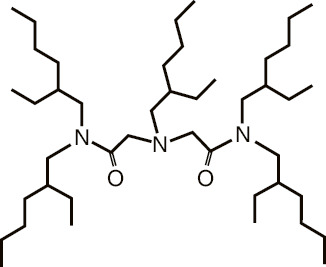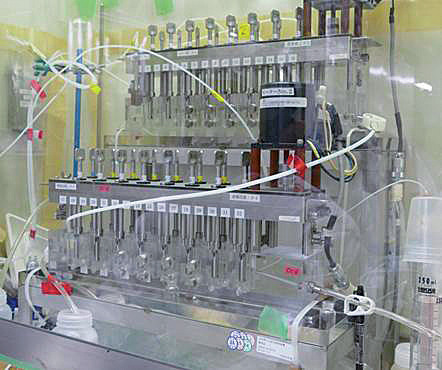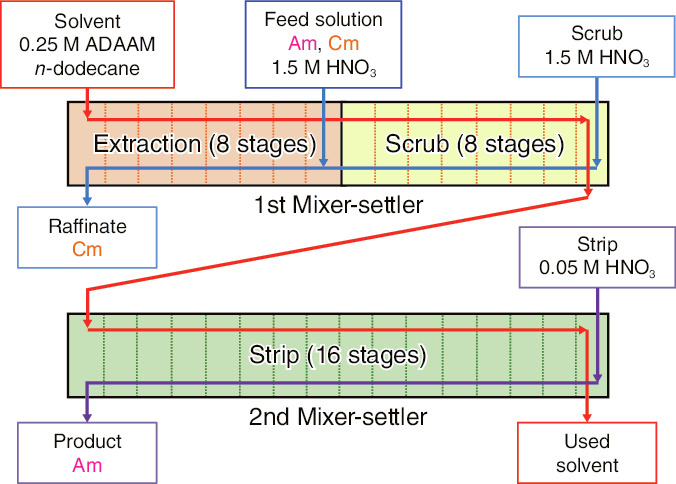
Fig.4-3 Molecular structure of ADAAM(EH)

Fig.4-4 Mixer-settler extractors in a fume hood

Fig.4-5 Operating conditions of two mixer-settler units
Table 4-1 Fractional distribution of Am and Cm

We have been developing partitioning and transmutation (P&T) systems. The long-term radioactive toxicity of high-level waste (HLW) mainly depends upon minor actinides (MAs) such as americium (Am) and curium (Cm). The toxicity of MAs could be decreased by P&T. The separation of MAs from HLW is an important task for P&T. After MAs are separated from HLW, the mutual separation of Am and Cm (Am/Cm separation) can be conducted. Am and Cm can be transmuted together, although Cm produces a large amount of heat during its decay. Therefore, the removal of the pyrogenic Cm nuclide would reduce the difficulties associated with MA-fuel fabrication. However, Am/Cm separation is very challenging because the two elements have similar chemical and physical properties. Although various ligands and separation methods have been studied for Am/Cm separation, an effective approach for practical use has not yet been developed.
A highly practical reagent, called alkyl diamide amine (ADAAM(EH), Fig.4-3) has been developed. ADAAM(EH) satisfies the CHON principle (it contains only C, H, O, and N atoms), making it practical for incineration at the end of its lifecycle. Furthermore, ADAAM(EH) has high extraction capacity, good solubility in diluents, clear and fast phase separation, fast extraction kinetics, easy synthesis, and low cost. Am/Cm separation using ADAAM(EH) has been investigated, and it was found that ADAAM(EH) has a high selectivity for Am over Cm.
A continuous, 5-h solvent-extraction and stripping test was conducted using a multistage countercurrent mixer-settler extractor ((MS), Fig.4-4). 0.25 M ADAAM(EH) in n-dodecane was used as the solvent. The concentrations of HNO3 in the feed and scrub solutions were 1.5 M and 0.05 M in the strip solution, respectively. The concentrations of metal ions used in the feed solution were sub-ppb-level for Am and Cm (Fig.4-5). Am was extracted and stripped with a very high yield (Table 4-1). The feed solution was contaminated with 9.6% Cm. A decrease to 10% pyrogenic Cm would reduce difficulties in MA-fuel fabrication. By contrast, Am is removed from the Cm in the raffinate, facilitating disposal of Cm.
In the future, we will investigate the reaction mechanisms and radiation of ADAAM(EH). Additionally, a HLW HOT test will be performed to complete the separation process.